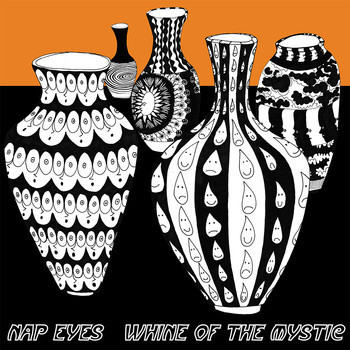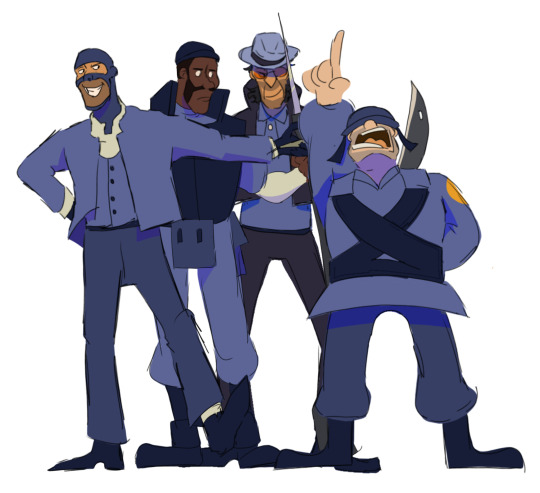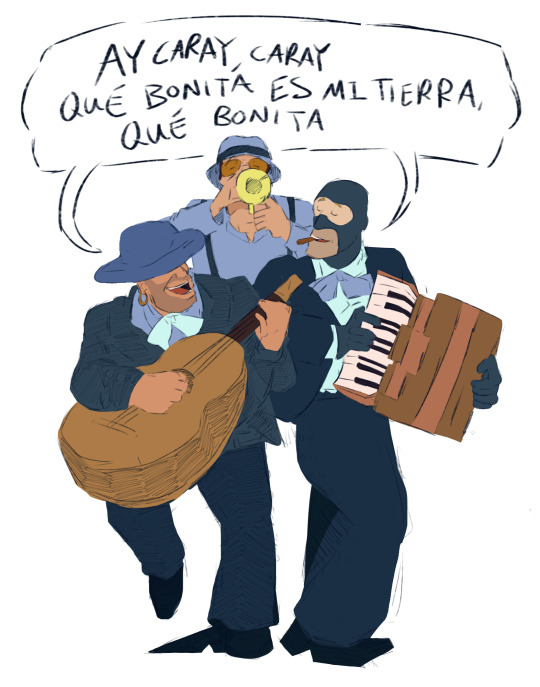#Nova Scotia music
Explore tagged Tumblr posts
Text
Canadian folk rock singer-songwriter, Joel Plaskett, joins us on this episode of The Adamantium Podcast. We discuss his newest album, One Real Reveal, it’s themes, simplified process, the spoken words element, and the artwork created by his wife, Rebecca Kraatz. We also discuss his band Joel Plaskett Emergency, his 44-song album released during the pandemic, his father, Bill Plaskett’s influence on his career, touring with The Tragically Hip, and opening for Sir Paul McCartney in his hometown of Halifax.
#The Adamantium Podcast#podcast#Joel plaskett#Joel Plaskett Emergency#music podcast#music journalism#toronto podcast#toronto music scene#canadian podcast#canadian music#Nova Scotia music#podcast interview#interview#interviewer#podcaster#podcasting#talk show#talk show host#podcast host#rock music#folk rock#indie rock#folk music#rock n roll#singer#singer songwriter#SoundCloud
2 notes
·
View notes
Text
274: Nap Eyes // Whine of the Mystic

Whine of the Mystic Nap Eyes 2014, Plastic Factory (Bandcamp)
Can’t speak to the sound on the original 2014 pressing of this guy from Plastic Factory Records, but the 2015 Paradise of Bachelors/You’ve Changed edition sounds pretty revelatory to me—kudos to the folks at the plant, and to Mike Wright and Peter Woodford for the mixing and mastering. Talk about Nap Eyes tends to quickly descend into the Nigel Chapman show—the vocalist’s laconic cadences and ambling lyricism offer plenty of grist for a critic to chew on, but here on the LP the rhythm section is mixed loud and way up front so that the insistent throb of Josh Salter’s bass becomes as difficult to ignore as the pounding of your own pulse in your ears when you’ve run too hard. Whine of the Mystic was recorded at Drones Club in Montreal back in 2013, which is basically just a none-too-large loft apartment in my current neighbourhood where they do raves sometimes, and the record sounds just like listening to the boys play while wearing good custom-fitted ear plugs. That rawness does a band who can flirt with a nutritious beigeness a lot of good—the guitars singe and flare, the amps sizzle, and the feeling of this band as a slack psych live force comes through.
youtube
I’ve been a huge fan of Nap Eyes since I caught them in Ottawa back in 2014, and people generally dig them when I recommend the record (with the exception of my pal Meghan, who despises them with the grumpy exhaustion that comes of seeing a band you don’t like constantly opening for bands you do). As such, Whine of the Mystic has been with me through a lot—the best songs (like “Dark Creedence,” and the last four) make a shimmering soundtrack to existential hangovers; walking toward some workaday Calvary in the rain; handrolling cigarettes badly; pining for girls if only to keep in practice; not getting a master’s; being 27 as hell for many years. It’s full of little touches that still delight me, like when they kinda morph into the Proclaimers for a bridge on “The Night of the First Show,” or the way the raincloud pacing of “Dreaming Solo” finally cracks open into the most amiable outro jam imaginable.
Giving your record a punny name is a risky choice, and as a phrase Whine of the Mystic skirts the edge of dorkiness. But in the end, I come down on it as an apt synopsis of the album’s charms. Chapman’s plaints linger on the humdrum, yet they paint the experience as intoxicating, Halifax as the backdrop for an ancient mystery cycle that repeats itself wherever life’s taking place. It brings to mind an exchange from Louis Malle’s The Fire Within, a superficially dull but emotionally feverish movie I haven’t thought of in ten years. The main character, a suicidal alcoholic who feels drained by what he perceives as the world’s absence of meaning, talks to an old friend, who has settled into a steady life as an academic and a husband. I don’t remember much of what they talk about, besides this:
Alain Leroy: Dubourg, what will you do tonight? Dubourg: Tonight, I'll write a few pages on my Egyptians, then make love to Fanny. I fall into her silence as into a well. At the bottom is a great sun that warms the earth.
All life is quotidian, but the primal and transcendent lies within that quotidian life, if you can truly immerse yourself within your own. Good luck.
youtube
274/365
#nap eyes#monomyth#'10s music#canadian music#indie rock#jangle pop#indie psych#nigel chapman#music review#vinyl record#halifax#halifax music#nova scotia#nova scotia music
3 notes
·
View notes
Text


More antics of the blu mercs! Didn’t expect such a warm reception to these silly little headcanons at first, and I’m working up the motivation to finish the rest of the team (failing)
some sillies..


#tf2#team fortress 2#Chinese ppl are fond of Mexican mariachi music but know fuck all about Latinamerica as a whole..#Hence me so pls tell me if anything’s awry here#Anyway#blu soldier and blu demo have an odd North American thing going on.#North American bonding ritual where they have gay sex#Also Canadians from Nova Scotia have an irish/Scottish esque accent#tf2 fanart#tf2 soldier#tf2 sniper#tf2 spy#tf2 demoman#quotidianish#tf2 au#art
311 notes
·
View notes
Text
2024-25 Ottawa Senators famous relations
#19 Drake Batherson: Grand-nephew of singer Matt Minglewood, Son of former St. Francis Xavier University men's hockey assistant coach Norm Batherson and nephew of former Richmond RiverDogs D Dennis Vial. #73 Noah Gregor: Son of former Birmingham Bulls LW Colin Gregor. #71 Ridly Greig: Son of former Iserlohn Hähne RW William Greig and nephew of former Mohawk Valley Comets LW the late Bruce Greig. #3 Nick Jensen: Son of former Melbourne Sharks head coach Jeff Jensen, nephew of former A.T.S.E. Graz LW the late Steve Jensen, 2nd cousin of former Rittner Baum D Dave Jensen and cousin of former Nottingham Panthers C Joe Jensen. #9 Josh Norris: Son of former Frankfurt Löwen GM Carl Norris, nephew of former Klagenfurter A.S.C. C Warren Norris and brother of former Kalamazoo Wings LW Coale Norris. #85 Jake Sanderson: Grand-nephew of Edmonton Oil Kings scout Murray Brookbank, son of former New York Islanders development coach Geoff Sanderson and 2nd cousin of Chicago Blackhawks scout Wade Brookbank & Wilkes-Barre/Scranton Penguins assistant coach Sheldon Brookbank. #37 Donovan Sebrango: Son of former C.D.F. Montreal assistant coach Eduardo Sebrango. #7 Braeden Tkachuk: Son of former St. Louis Blues LW Keith Tkachuk, brother of Florida Panthers LW Matthew Tkachuk, brother-in-law of Providence Bruins C John Farinacci, cousin of Hartford Wolf Pack D Casey Fitzgerald, former Utica Comets C Ryan Fitzgerald, Pittsburgh Penguins C Kevin Hayes & former Wilkes-Barre/Scranton Penguins RW the late Jimmy Hayes and 2nd cousin of New Jersey Devils GM Tom Fitzgerald.
#Celebrities#Sports#Hockey#NHL#Ottawa Senators#Indiana#Music#Canada#New Brunswick#Nova Scotia#Ontario#Virginia#Alberta#Alabama#Germany#New York#Minnesota#Australia#Austria#Italy#U.K.#Michigan#Newfoundland#Montana#Northwest Territories#Saskatchewan#AHL#Wilkes-Barre/Scranton Penguins#Soccer#Cuba
9 notes
·
View notes
Text
Ferry ride from Halifax to Alderney Landing, May 7, 20h20.
#now this one is a bit different from usual i know#still no music although it would probably have been more relaxing with some but im sticking to my credo#relaxing videos#ocean sunset#mine#daily calm#sea aesthetic#nova scotia#love taking the ferry i should do it more often#its only 15min and cost 2.75$ which usually gets you bck and forth.#waves#ferry view#the wind's smell was very oceany i loved it
23 notes
·
View notes
Text









⛓️ TOUR JOURNAL: DAY 3 - HALIFAX ⛓️
- On day three we met up with the Anti-Criss boys at the local Tim Horton’s before hitting the highway for a short three hour drive to Halifax.
- We arrived at Gus’ Pub way ahead of schedule, slammed some whiskey in the parking lot, and then headed out in the town.
- Took a brief stop into the local milsurp where I got myself some much needed new combat boots and then perused the weird oddities at the vintage shop next door to Gus’.
- Went down to Real Fake Meats for lunch where I got myself their much lauded and vaunted VEGAN DONAIR. Worth every cent if you ask me.
- Went back up to Gus’ and ripped the place apart alongside locals Hushmetal and Nightfall, who absolutely crushed it.
#Mistwalker#Anti-Criss#Crisswalker Tour#live music#Gus’ Pub#Halifax#Nova Scotia#NS#Maritimes#Eastern Canada#Atlantic Canada#Canada#Nightfall#Hushmetal#Real Fake Meats#black metal#blackened heavy metal#blackened speed metal#blackened thrash metal#thrash metal#speed metal#heavy metal#metal#black n roll#blackened punk#punk#hardcore punk#metalpunk#sludge metal#sludge
9 notes
·
View notes
Text
Neon Dreams [LINK]
The Rankin Family [LINK]
Rita MacNeil [LINK]
Matt Mays [LINK]
The Cottars [LINK]
Joel Plaskett [LINK]
April Wine [LINK]
Jody Upshaw [LINK]
The Trews [LINK]
The Stanfields [LINK]
11 notes
·
View notes
Text
3rd music video I did for my friends band “ Franky Moonlight “ song is called “She gets !
#canadian artist#indie rock#indie band#made in canada#music video#mtv video music awards#muchmusic#90s#90s nostalgia#multidisciplinary#multidisciplinary artist#nova scotia#contemporary artist#east coast
28 notes
·
View notes
Text

Alex being a sweetheart in his free time, which he inexplicably happens to have on FF album release day (??)
#I mean he is extremely sweet bless him but he is SO ONLINE LMAO#Alex if you’re reading this I mean it in the nicest way; I wish other musicians were as in touch with new music as you are#The contrast is just very funny to me I’m so sorry#Alex Kapranos#Franz Ferdinand#on The Human Fear release day???#Music#musicians#The band are called The Boojums btw#Cool garage rock from Nova Scotia; Canada#garage rock#rock n roll#and he’s right they’re real fun#alt rock
6 notes
·
View notes
Text

Coming down your chimney on December 24, Christmas Eve: Rainswept Days, a new track by Philip M Howard. Available at Gentle Passions Music on SoundCloud and Bandcamp.
#singer songwriter#folk music#canadian singer-songwriter#halifax#nova scotia#soundcloud#bandcamp#acoustic guitar#americana#love#sad#emotional#poetic#Philip M Howard#Gentle Passions Music
3 notes
·
View notes
Text





National Violin Day
Tune up your fiddle and get bowing, sign up to instrument lessons or attend a concert to hear the gorgeous sounds of a string orchestra.
The violin is easily the most well-known bowed string instrument across the world, and it is really not all that surprising to see that the violin does in fact have a day dedicated to its existence! After all, everything from Western and Indian classical music to bluegrass and jazz would be unimaginable today without the violin.
It is quite possibly the most versatile instrument in the world in terms of repertoire–and that must be why there is a special day all its own to celebrate the violin.
History of National Violin Day
The violin itself seems to have evolved from medieval instruments that were like fiddles. It came into its own distinct form by the 15th century, becoming the most popular virtuoso instrument in Europe by the 1660s. Most violins made today are copies after either Stradivarius or Amati, the latter being active as a violin maker in the 16th century.
Today, the violin not only remains an indispensable feature of western classical music, but has found its way into various forms of classical and folk music around the world as well as various other genres. There are a lot of violinists and fiddle players throughout the world today, so it is easy to see why National Violin Day has caught on!
In fact, the violin is present in the most prestigious musical groups in the world, including the Venetian Philharmonic Orchestra. Imagine an instrument with such humble beginnings becoming such an important mainstay of modern classical music.
Now it’s time to celebrate the day revolving around this humble instrument!
How to Celebrate National Violin Day
For those who want to get involved with National Violin Day but are not quite sure where to start, these ideas might help to set the stage for the day:
Play the Violin
Well, for those who happen to play the instrument, then it is a no-brainer to go ahead and play the violin in honor of National Violin Day. Get that violin out of its case, tune it, place some rosin on the bow, and get ready to make some beautiful music in honor of the day! And those who are a little bit out of practice might want to invest in some ear plugs for family members.
Go to a Violin Concert
For those who simply want to appreciate the sound of the violin without actually playing it, then it might be a great idea to go to a concert where the instrument would be played on National Violin Day.
Not sure where to go? Try out one of these important groups that is sure to feature a superb violinist or two:
Boston Symphony Orchestra Playing at Symphony Hall in Boston, Massachusetts, this orchestra also features a Young People’s Concert Series to allow the public to hear up-and-coming new talent.
Itzhak Perlman Undoubtedly one of the most talented violinists alive today, Perlman has achieved almost super star status with his instrument.
Trans-Siberian Orchestra Mixing classical music talent with rock band style, this group plays all round the world and, yes, they feature many songs with a violin. It’s not necessarily “classical”, but a modern ear for music just might love it.
Give a Gift to a Favorite Violinist
For those who happen to know someone interested in learning the violin but who doesn’t have an instrument – today would be the perfect occasion to gift that person a violin. Or gift something to a violinist in your circle, even if it’s just some sheet music, some rosin or just a little card to show appreciation for them and their attempt at mastery of the instrument.
The modern violin family includes not only the violin, but also the viola, the violoncello, and the double bass as well. So for those who know any cellists or violists, today would also be a great day to listen to them play or to get them a gift as well!
Watch a Film About the Violin
Interested in learning more but not ready for a live performance yet? That’s okay! National Violin Day is a great way to feed a mild interest by watching a film about the instrument. Whether fiction or documentary, these movies would be a great way to get started:
Music of the Heart (1999), starring Meryl Streep This biographical drama features the true store of Roberta Guaspari, who was a violin teacher in Harlem in the late 1980s.
Orchestra of Exiles (2012), written by Josh Aronson This documentary tells the true story of a Polish violinist who founded the Israel Philharmonic Orchestra.
Small Wonders (1995), directed by Allan Miller This is the Academy Award nominated documentary upon which Music of the Heart was based. It tells the story of the kids in East Harlem and their violinist teacher who went against the odds to play at Carnegie Hall.
A Late Quartet (2012), starring Christopher Walken This movie tells the story of a group of four struggling musicians who face serious challenges when their cellist is diagnosed with Parkinson’s disease.
Start Taking Violin Lessons
For those who have ever had the inclination to learn the violin, or perhaps have one laying around unused, this day is just the perfect time to start taking violin lessons. Start with the basics like brushing up on how to read music and then get to practicing. Don’t forget other important equipment such as a practice mute, extra set of strings, metronome and a comfortable shoulder rest.
Source
#The Source of Country Music by Thomas Hart Benton#Nashville#Tennessee#Country Music Hall of Fame and Museum#Joan Harriss Cruise Pavilion#Sydney#Largest Ceilidh Fiddle in the World#Big Fiddle Market#tourist attraction#cityscape#art#landmark#evening light#Atlantic Ocean#Cape Breton Island#Nova Scotia#water front#National Violin Day#13 December#NationalViolinDay#travel#original photography#vacation#architecture#USA
3 notes
·
View notes
Text

Starts today!
#Ratpiss#Le Bien Le Malt#Rimouski#Quebec#live music#powerviolence#grindcore#Xeroz Arcade#Moncton#New Brunswick#Radstorm#Halifax#Nova Scotia#Odell Lodge#Fredericton#Maritimes#Eastern Canada#Atlantic Canada#Canada#death metal#extreme metal#crust punk#crust#punk#sludge metal#sludge#grind#metal#heavy metal#mincecore
3 notes
·
View notes
Text
instagram
My favorite tiny queer Canadians!
Source: CBC Music's Instagram Page
#Tegan and Sara#Tegan Quin#Sara Quin#Elliott Page#Tegan Rain Quin#Sara Kiersten Quin#Quins#Queens#Junos#Junos 2024#Juno Awards#Juno Awards 2024#2SLGBTQIA+#2SLGBTQ#2SLGBTQ Canadians#LGBTQ#LGBTQ Canadians#Queer Canadians#LGBTQ Representation#Queer Representation#Halifax#Nova Scotia#NS#Canada#CBC#CBC Music#Canadian Broadcasting Company#Canadian Broadcasting Corporation#Canadian Instagram#Canada Chronicles
3 notes
·
View notes
Text
Song of the Day: Wonder - Classified
Song of the Day: Wonder - Classified
Canadian rapper and producer CLASSIFIED‘ single ‘Wonder,’ which features fellow Canadian native singer-songwriter Ian Janes, paints a picture of an individual grappling with personal loss, societal challenges, substance use, and questions about identity and existence. It’s a profound reflection on life, questioning the ‘whys’ and ‘hows’ of reality and trying to find meaning amidst…

View On WordPress
#Big Story Entertainment#Canada#Classified - Wonder#Halflife Records#hip-hop#indie music#indie rapper#Music#music video#Nova Scotia#reflective songs#songs about life#Songs of the Day
2 notes
·
View notes
Text
#hip hop#rap#rap music#rapper#underground hip hop#underground rap#canadian hip hop#canadian rapper#indigenous#mi'kmaq#mi'kmaw#indigineous people#underground#nativeamericans#nova scotia#new music#native american#pop music#pop#musician#music#song#artists on tumblr#canadian music#canadian#canada#east coast rap#east coast#wild west#country rap
2 notes
·
View notes
Text
Halifax black metal outfit Nightfall upped the ante with their onslaught of epic and grandiose hymns at Gus’ Pub. Talk about a huge sound that absolutely fills up the room.
#Nightfall#black metal#extreme metal#heavy metal#metal#Gus’ Pub#live music#Crisswalker Tour#Viridian Cult Productions#Viridian Cult#Halifax#Nova Scotia#NS#Maritimes#Eastern Canada#Atlantic Canada#Canadian#Canadian metal#Nova Scotian metal
6 notes
·
View notes